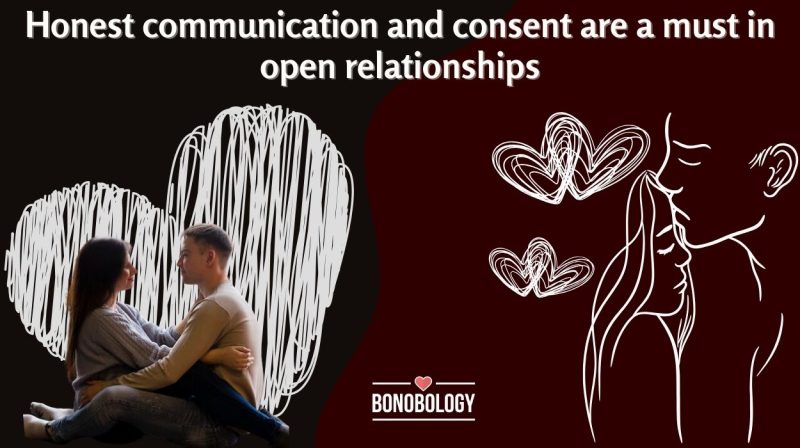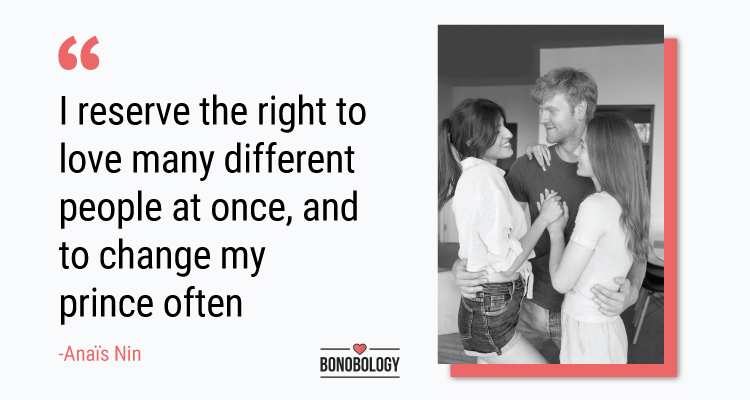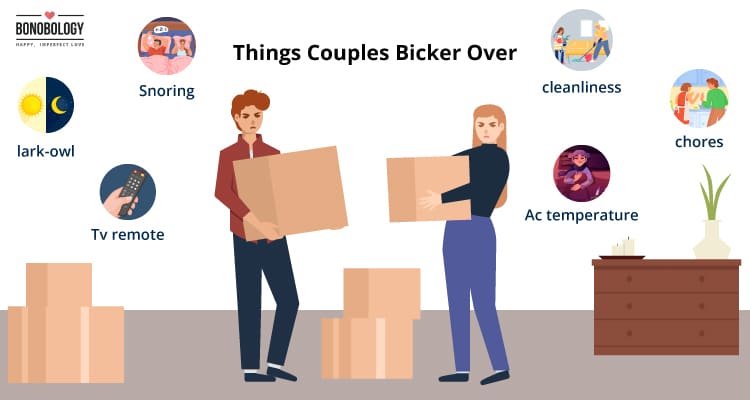Can you fall in love with multiple people at the same time? In other words, can you handle a polyamorous marriage? Reminds me of an episode from Easy on Netflix. After taking couples’ therapy, married parents Andi and Kyle explore an open relationship. What happens next? Loads and loads of drama!
Andi ends up ruining her friend’s monogamous marriage. And Kyle ends up falling in love with someone else. This, right here, is precisely the painful struggle of processing married polyamory. However, a polyamorous marriage doesn’t always have to end up being a cesspool of complicated equations and emotional wounds. By setting boundaries and expectations right, you can find that sweet spot that works well for everyone involved.
How? We’re here to help gain better clarity on the polyamorous meaning and ways to make these seemingly complex relationships work, in consultation with counseling psychologist and certified life-skills trainer Deepak Kashyap (Masters in Psychology of Education), who specializes in a range of mental health issues, including LGBTQ and closeted counseling.
What Is A Polyamorous Relationship?
Table of Contents
For starters, what is polyamory? The simple polyamory definition is the practice of romantic relationships with more than one partner, with the informed consent of all parties involved. However, when it comes to actually putting this concept into practice, a lot of complications can rear their heads. That’s why the polyamory meaning in true earnest is essential before you dive in headlong.
Deepak explains, “One major difference between polyamory and cheating on your partner is that the former involves informed and enthusiastic consent. Note that this consent is not coercive in the way that “I’m doing this because you’re asking me to”.
“Consent has to be enthusiastic, something along the lines of “Let’s see other people too” – too being the operative word here. Polyamory is on the rise during times that are free/equal and when people are more in touch with their desires. As we’re evolving as a society and people are coming out of the closet fearlessly, polyamory is on the rise.” However, the word ‘polyamory’ is very complex and there are many layers to it. Let’s explore it in greater detail.
Related Reading: What Is An Open Marriage And Why Do People Choose To Have One?
Types of polyamorous relationships
What is a polyamorous relationship? Deepak points out, “This is how the relationship agreement goes. You have a primary relationship – the person that you’re married to and the one you share finances with. Then, there are secondary partners – you’re not romantically committed to them; they are your sexual, loving, and passionate partners.”
“Do you enjoy emotional intimacy with your secondary partners? Yes, you do. The word ‘amor’ in polyamorous implies that there is an angle of love and attachment. Otherwise, it would be an open marriage.”
This polyamorous definition given by Deepak is called a hierarchical poly. Let’s now explore the other types of polyamorous relationships and their rules in greater detail:
- Polyfidelity: Partners in a group agree not to have sexual/romantic relationships with people who are not in the group
- Triad: Involves three people who are all dating one another
- Quad: Involves four people who are all dating one another
- Vee: One person is dating two different people but those two people are not dating one another
- Kitchen-Table Poly: Partners and partners of partners comfortably reach out to one another and talk directly about requests, concerns, or emotions
- Relationship Anarchy: Multiple people are free to connect with others romantically and sexually without the restriction of rules, labels, or hierarchy
How To Make A Polyamorous Marriage Work? 6 Expert Tips
Studies show that 16.8% of people desire to engage in polyamory, and 10.7% have engaged in polyamory at some point during their life. Around 6.5% of the sample reported that they knew someone who has been/is currently engaged in polyamory. Among participants who were not personally interested in polyamory, 14.2% indicated that they respect people who engage in polyamory.
The above statistics are proof that polyamory couples are not rare anymore. If you’re one of them but have held back on account of the question, “Is a polyamorous marriage sustainable?”, here’s a step-by-step guide with expert-backed tips to help you figure out how to make it work and embrace who you truly are:
1. Educate yourself
Deepak advises, “Before you jump into the deep end of things, educate yourself. See if non monogamy is for you or not. You can also join the polysupport group that I run.” Adding to this, he gives a list of books that you must read before entering a polyamorous marriage:
Related Reading: Are You A Serial Monogamist? What It Means, Signs, And Characteristics
- Polysecure: Attachment, Trauma and Consensual Non Monogamy
- The Ethical Slut: A Practical Guide to Polyamory, Open Relationships & Other Adventures
- More Than Two
These books will help you understand the complexities of polyamory, ranging from the legal problems to sexually transmitted infections. If you’re not much of a reader, don’t worry we’ve got your back. You can listen to the following podcasts to explore the ‘polyamorous’ meaning in greater detail:
- Making Polyamory Work
- Polyamory Weekly
As Deepak points out, seeking poly-friendly counseling should be your first step if you’re in a committed relationship and don’t know where to begin. A poly-friendly professional will help you navigate the struggles of being poly in a not-so-polyamorous world. If you’re looking for help and guidance, counselors on Bonobology’s panel are always here for you.
2. Communicate, communicate, communicate
Deepak says, “Most polyamorous marriages fail because people are not willing to communicate. Jealousy and insecurity take hold in all intimate relationships but here, you will come face-to-face with these trust issues on a day-to-day basis.
“If you want to make your relationships work, communicate, communicate, communicate! You can never over-communicate in a poly marriage. You do not run that risk. Share every little detail with your spouse, including your jealousy, insecurity, and your needs.”

Here are some tips that can make your poly marriage go a long way:
- Appreciate your partner/tell them about their strengths regularly
- Reassure them every now and then that you are not going anywhere
- Don’t rush the process and give your partner ample time to adjust/process
- Know that polyamory won’t fix your relationship problems unless you already have a strong foundation of healthy communication to work upon
3. Know that you cannot be everything to only one person
According to Deepak, there are two major issues that polyamory couples face:
- “I’m losing something that I should have. My partner does things to a third person and not me. There is something wrong with me”
- “I’m not good enough. They will find someone better than me. I will be left alone while my partner is out there finding solace in other relationships”
He adds, “You cannot be everything to one person”. He is right! It’s humanly impossible to have all your emotional and physical needs met by a single person or meet someone else’s. So, the secret to a successful polyamorous marriage/relationship is to not your partner’s equation with their other partners define your self-worth.
4. Practice ‘compersion’ in your polyamorous marriage
How to stop feeling jealous in married polyamory? Turn your jealousy into compersion, which is a form of unconditional love. Compersion is a type of empathetic joy that you feel on seeing that your partner is in a good place. You’re on the outside but you still don’t feel jealous. In fact, you feel happy that your partner is happy.
According to GO Magazine, the term compersion originated in the late 1980s within a San Francisco polyamorous community called Kerista. However, the concept itself has a much older, deeper history. The Sanskrit word for it is ‘mudita’, which translates to “sympathetic joy”, which is one of the four core pillars of Buddhism.
And how to cultivate compersion in consensual non-monogamy? Here are some tips:
- Start by developing empathy, a skill of resonating with others
- When your partner expresses jealousy, don’t get defensive and listen patiently
- Understand that the presence of another person is not a threat to you

5. Exploring polyamory doesn’t threaten your child’s needs; instability does
Deepak points out, “Way before the concept of monogamous relationships came about, a child used to be the “child of the tribe”. He/she didn’t know who the parents were. Sometimes, a child would know their mother but not their father.
“So, a child doesn’t necessarily need one man and one woman to raise him/her. They need love, attention, and nutrition. They need stable figures/guardians who can emotionally regulate themselves.” As long as you do that, the fact that you are with more than one person is not going to pose a threat to your children’s psychological well-being.”
Related Reading: 12 Best Polyamorous Dating Sites For 2022
6. Ignore the brainwashing attempts by the society
Deepak explains, “The concept of pair bonding is universal in nature. But, marriage (a specific kind of pair bonding) is a social/cultural construct. It is a man-made notion. It is a myth that just because you practice polyamory, you’re commitment-phobic. In fact, in a polyamory relationship, the degree of commitment is a lot higher since you are committing to a lot of people.”
So, don’t buy the narratives propagated by society. Honor your truth and opt for equations that maximize your relationship satisfaction. If casual relationships or multiple partners make you happy, so be it. You don’t owe anything to anyone, provided your romantic relationship is the safe space that allows you to experiment and explore.
Key Pointers
- Practicing polyamory is not possible without informed and enthusiastic consent
- Read books, listen to podcasts and join polysupport groups to educate yourself
- There is no such thing as over-communication when it comes to successfully navigating non-monogamy
- Your choices regarding romantic partners have no bearing on the well-being of any children you may have; your ability to nurture them and emotionally regulate yourself does
- Pair bonding is universal but marriage is a socio-cultural construct
- Turn your jealousy into compersion, a sense of sympathetic joy and empathy, to build and nurture polyamorous bonds
Finally, Deepak says, “Consensual monogamy seems impractical to most married couples because the more people you involve in your marriage, the more the emotions at stake and hence more potential drama. Yes, there’s a lot to risk. But if it goes well, multiple relationships are definitely more rewarding than monogamous relationships.”
FAQs
In 2020 and 2021, three Boston-area municipalities — the city of Somerville followed by Cambridge, and the town of Arlington — became the first in the country to extend the legal definition of domestic partnerships to include ‘polyamorous relationships’.
In polyamorous communities, anyone of any gender can have multiple partners—the gender of the person or their partner does not matter. On the other hand, Polygamy is almost universally heterosexual, and only one person has multiple spouses of a different gender.
Your contribution does not constitute a charitable donation. It will allow Bonobology to continue bringing you new and up-to-date information in our pursuit of helping anyone in the world to learn how to do anything.






















Featured
My Wife Wants Open Marriage: 17 Tips To Navigate
Open Relationship Dating: What It Is & Why It Works
13 Glaring Red Flags Before Moving In Together You Should Never Ignore
Polyamory Vs Open Relationship – 8 Key Differences (And Some Similarities)
Polyamorous Vs Polygamy – Meaning, Differences, And Tips
Are You Moving In Together? Checklist From An Expert
21 Expert Tips For Couples Moving In Together
Non-Monogamous Relationship: Meaning, Types, Benefits
Decorating Tips For Couples Moving In Together
How Soon Is Too Soon To Move In Together?
Cohabitation – Everything You Need To Know About It
Does A Friends With Benefits Relationship Actually Work?
Tips To Ease Moving In With Your Boyfriend
10 Open Relationship Rules That Have To Be Followed To Make It Work
Does Living Together Before Marriage Mean You Are Ready For The Wedding?
Marriage VS Live-In Relationship: Everything You Wanted To Know
What Are The Disadvantages Of Live-In Relationships?
5 Things To Consider Before Beginning A Polyamorous Relationship
7 Creative Ways To Ask Your Girlfriend To Move In With You
My friend invited me to his house and I fell in love with his wife